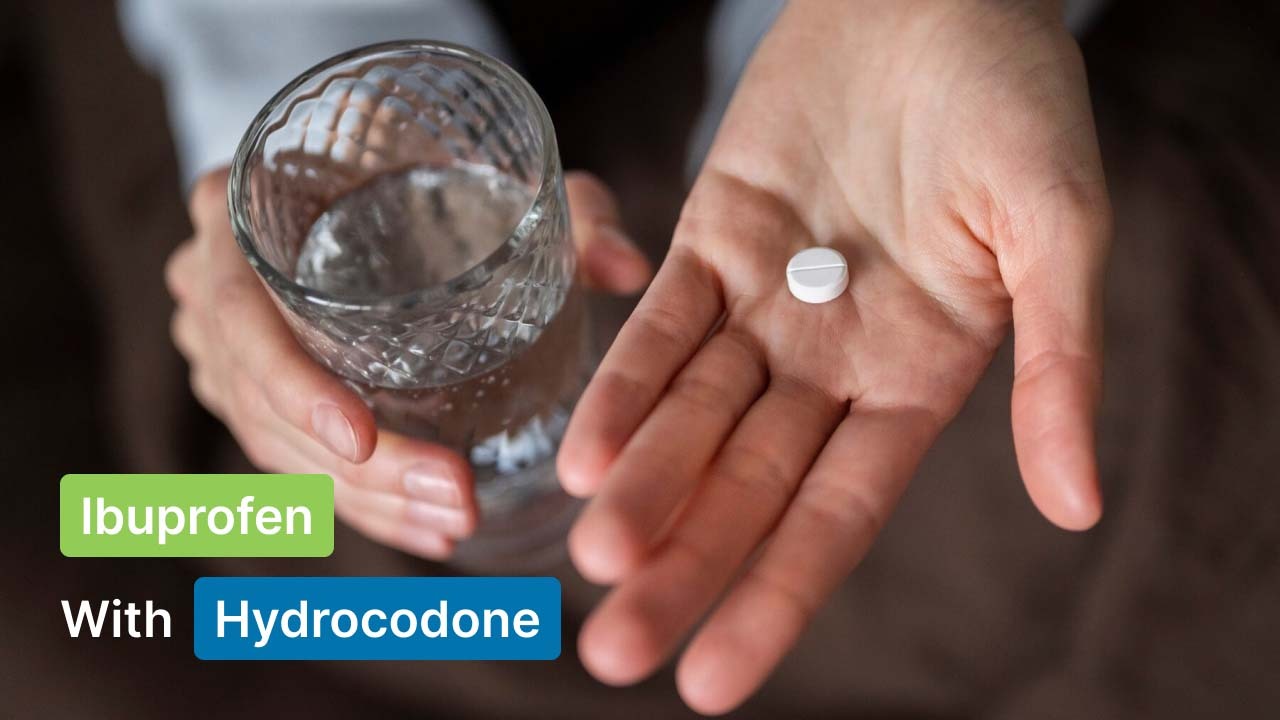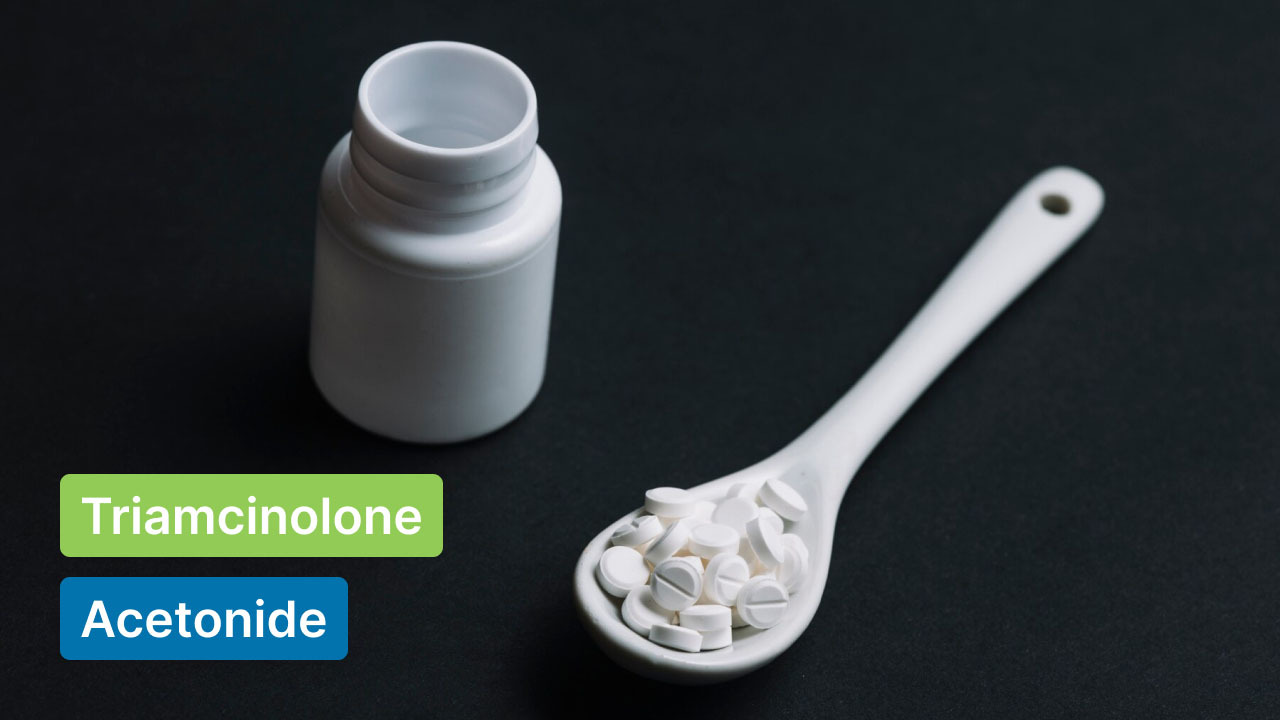
If your doctor has prescribed Doxycycline for your infections, you might be curious to know how long Doxycycline takes to work for infections and when you can expect improvement in your symptoms.
Doxycycline is a popular antibiotic used to treat bacterial infections in the human body.
It is prescribed for the treatment of common infections such as skin infections, STIs, UTIs, and other rare infections. This antibiotic can target a wide range of bacteria, both gram-positive and gram-negative bacteria, which means it has a broad-spectrum nature.
In this article, we’ll answer a few of the common questions, including “How long does it take for doxycycline to work for bacterial infection?”
What is Doxycycline?
Doxycycline hyclate, commonly called Doxycycline, is a powerful antibiotic that belongs to the tetracycline antibiotics group. This medication is used to treat several bacterial infections, including acne, rosacea, and malaria.
It works by inhibiting the growth and replication of infection-causing bacteria. This helps your body’s immune system fight off the infection.
Note that Doxycycline is bacteriostatic, meaning it does not kill bacteria; rather, it suppresses their growth. Hence, they do not work for viral infections.
This multi-purpose drug is used in a variety of common bacterial infections, including:
- Skin infections and conditions – Eg. Severe acne, Rosacea
- Respiratory and lung infections – Eg. pneumonia, Sinusitis
- Sexually Transmitted Infections (STIs) – Eg. Syphilis, Chlamydia, Gonorrhea
- Eye and ear infections
- Bacterial gastroenteritis
- Oral infections (such as periodontitis)
- Anthrax exposure
- Malaria prophylaxis
- Lyme disease
Doxycycline is sometimes prescribed as an alternative to amoxicillin for people who are allergic to penicillin-type antibiotics.
Doxycycline is only used when prescribed by a qualified doctor. It comes as a tablet, capsule, and oral suspension. It is typically taken once or twice with a glass of water, depending on the condition.
Some of the common brands of Doxycycline include:
- Vibramycin®,
- Doryx®,
- Doryx MPC®,
- Doxy 100®,
- Atridox®
How Long Does it Take For Doxycycline to Work For Bacterial Infection?
The average timeline for Doxycycline to work for bacterial infection is known to be 24 to 48 hours. However, this totally depends on the type of infection being treated.
Doxycycline is highly absorbent and is absorbed by the body quickly after taking it. It is reported that Doxycycline experiences the highest concentration 2-3 hours after administering the medication.
Doctors advise patients to wait for at least 48 hours to show visible results. Within two days, your symptoms gradually begin to reduce.
Now, let’s explore some of the bacterial infections and how long Doxycycline takes to clear those infections.
i) For Acne –
In the US, most dermatologists prescribe Doxycycline antibiotics for clearing acne. As mentioned in the American Academy of Dermatology (AAD) Acne Guidelines, this medicine is recommended as an add-on treatment for moderate to severe acne and anti-inflammatory acne resistant to topical therapies.
Interestingly, many people who use Doxycycline for their acne treatment have reportedly achieved great improvement.
Doxycycline usually takes 1 to 2 weeks to clear an infection completely. With conditions like acne and Rosacea, it can take several months for your skin to fully clear. However, you might start seeing improvement within two to three weeks.
When prescribed, Doxycycline is typically used for two to three months. Your healthcare provider will take you off the drug once your skin has improved. You’ll then stay on topical treatments long-term to prevent any breakout.
People with especially severe cystic or nodular acne may be required to use Doxycycline for longer periods of time. Each case is evaluated individually, weighing the benefits against the risks.
ii) For Sexually Transmitted Infections (STIs) –
STI treatments are something that a patient should never take for granted. If left untreated, it can lead to more severe complications, which may be irreversible.
One of the most common sexually transmitted infections (STIs) is Chlamydia, and Doxycycline is mostly prescribed in such cases. The timeline for Doxycycline to work against such STIs is relatively short.
A single dose or a short course of Doxycycline is usually enough to clear chlamydia infection. Patients often get relief within 3-4 days, with a full course expected between 7 and 10 days.
In mild cases where the disease is not particularly aggressive, visible improvements may appear sooner.
For gonorrhea, the timeline is slightly longer, but symptoms should improve within a week of starting the treatment.
If you’re diagnosed with an STI, you must take the full course of Doxycycline as advised by your healthcare provider, even if your symptoms improve before completion.
iii) For Sinus infections –
When it comes to treating sinus infections, Doxycycline is usually not the first-line antibiotic option. Most patients merely require observation and symptom care for uncomplicated sinus infections, which are often caused by viruses rather than bacteria.
Hence, Doxycycline is only prescribed for a bacterial sinus infection, plus if a patient is allergic to penicillin. The medication’s efficacy in sinus infection treatment depends on the specific bacteria causing the infection.
In cases of acute bacterial Sinusitis, patients may start experiencing relief within a few days of taking Doxycycline. However, it’s important to complete the full course of antibiotics (7-14 days) to ensure complete eradication of the bacteria causing the infection.
Speaking of chronic Sinusitis or recurrent infections, the doctor may recommend a longer course of Doxycycline. Hence, the timeline for improvement can extend over several weeks (14-24 days).
iv) For UTIs –
Doxycycline is also commonly used for treating complicated Urinary Tract Infections (UTIs), such as urethritis. Although it’s not a first-line treatment for UTIs, Doxycycline has been shown to be effective in managing its symptoms while addressing the root cause of the infection. Note that it is not preferred for treating cystitis.
For adults, the standard dose of Doxycycline to treat UTIs is 100 mg twice a day for the course of one week.
For children with UTIs, dosages are generally based on their body weight and will be determined by the doctor. When taken as prescribed, patients may begin experiencing relief within 24 to 48 hours.
But again, the duration of the drug to work depends on the severity of the infection. Please speak with your healthcare professional for more details.
How Long Does Doxycycline Stay In Your System?
How quickly your body clears a medication depends on factors such as your age, health, body mass, dosage, and metabolism.
In adults, the elimination half-life of Doxycycline, i.e., the time it takes for half of the drug to be removed from the body, is usually around 18-22 hours.
This means that after a single dose, half of the Doxycycline takes approximately 1-2 days to be eliminated from your body. After taking multiple doses, the drug accumulates, and it may take several days for the full effects of the medication to be cleared from your system.
In practical terms, it normally takes about 5 half-lives for the drug to be cleared from your system. As the days go by, Doxycycline continues to target the infection-causing bacteria, gradually eliminating them.
Consequently, it may take 5 to 10 days for Doxycycline to be eradicated from your body after the last dose.
However, note that individual factors like liver and kidney function can influence the rate at which medications are metabolized and eradicated. In some cases, it might take a bit longer or shorter for this medication to leave the system.
Regardless of the infection, it’s advisable to consult a healthcare specialist for personalized details on specific health conditions that may affect drug metabolism.
If you have any concerns regarding drug interaction or if you’re planning other medications, make sure to discuss them with your doctor.
How to Use Doxycycline for Infection?
When taking Doxycycline for bacteria, you should complete the full course of treatment as directed by your doctor. Even if you feel your symptoms are getting better after taking it for 2-3 days.
This is because it will help ensure that all the bacteria causing the infection are destroyed. This further minimizes the risk of recurrence or the development of antibiotic resistance.
Some formulations of Doxycycline are best taken on an empty stomach, while others can be taken with or without food.
If you feel upset in your stomach after taking Doxycycline, take it with food or milk unless otherwise instructed by the healthcare provider.
Make sure to swallow the tablet with a glass of water in one go. This ensures that it doesn’t get stuck in your esophagus, where it could cause irritation.
What Are The Side Effects Of Doxycycline?
While being a strong antibiotic for bacterial infection, you may encounter a few unwanted side effects after taking Doxycycline. However, it is generally well-tolerated among most patients.
The mild side effects include:
- Headache
- Feeling nauseous or sick
- Vomiting
- Skin sensitivity/ itching
- Stomach upset or bloating
- Irritation in the food pipe
- Gas or Diarrhea
- Esophageal ulcer
- Loss of appetite
- Yellowish or grayish discoloration of teeth in children.
Serious but rare side effects:
- Unexplained bruising and bleeding
- Swollen tongue or lips
- Loss of fingernails
- Liver damage
- Increased risk of sunburn
- Severe allergic reactions
- Joint and muscle pain
- Intracranial hypertension
- Inflammatory bowel disease (IBS)
Another potential downside of Doxycycline is it reduces the effectiveness of contraceptives in females. No matter how severe your side effects may be, or if they keep recurring, seek immediate medical attention.
What If You Experience Side Effects From Doxycycline?
Most of the side effects listed above can be easily managed at home. You can try the following tips to manage or prevent the doxycycline side effects:
- Take Doxycycline with food to prevent incidents of gastrointestinal issues like stomach upset or nausea.
- Stay away from direct sunlight as much as you can, and wear SPF50+ sunscreen and protective clothing when you’re outside to prevent sunburn. Stop taking the medicine if you develop a rash in sun-exposed areas.
- Eat probiotic-rich foods such as yogurt, kefir, etc., or take probiotic supplements. This is to replenish healthy bacteria and avoid diarrhea.
- If you notice watery or bloody stools within a few days of discontinuing the medication, speak with your doctor.
Also, if you experience serious adverse reactions like uncontrolled diarrhea or intense vomiting, consult a doctor immediately and seek medical help to avoid further complications.
Key Takeaway!
Hopefully, this article gave you an insight into “How long does it take for doxycycline to work for bacterial infection?” Doxycycline is a prescription antibiotic used in the treatment of many bacterial infections.
It stops the growth of both gram-positive and gram-negative bacteria inside your body. Doxycycline is usually the treatment of choice for people who cannot take penicillin-type antibiotics. This medication is also well-tolerated by many people with minimal side effects.
How long Doxycycline takes to work depends on the condition you’re being treated for and your symptoms. But to be precise, it takes 2-3 weeks to treat your bacterial infection completely.
Remember not to stop taking Doxycycline before the completion of the entire course, even if your symptoms improve. This will leave your infection untreated, and the medication will be useless.
FAQs
1. How do I know if Doxycycline is working?
Ans: You will see visible results and relief generally within 48 hours. The doctor will review it after 4-6 weeks to check how well the medicine is working.
2. What infections will Doxycycline clear up?
Ans: Doxycycline can clear up a number of infections, including tooth infections, UTIs, skin infections, and STIs, among others.
3. What foods to avoid while taking Doxycycline?
Ans: Some of the foods you should avoid when taking Doxycycline are cheese, milk, butter, spinach, eggs, beef, tofu, kale, and other iron-rich foods.
4. What is the best time to take a doxycycline?
Ans: The best time to take the doxycycline medicine is usually 1-2 hours before or after the meal.
5. Which is stronger, Doxycycline or amoxicillin?
Ans: Both amoxicillin and Doxycycline are strong and effective antibiotics used for treating several bacterial infections.
6. Is it normal to still have symptoms after taking Doxycycline?
Ans: Yes. Like every antibiotic, it’s completely normal to still have symptoms after taking Doxycycline. You may experience an upset stomach or light sensitivity. They may only last for a few days, but if your symptoms don’t improve after 1-2 weeks, contact your doctor.
Read Also:









